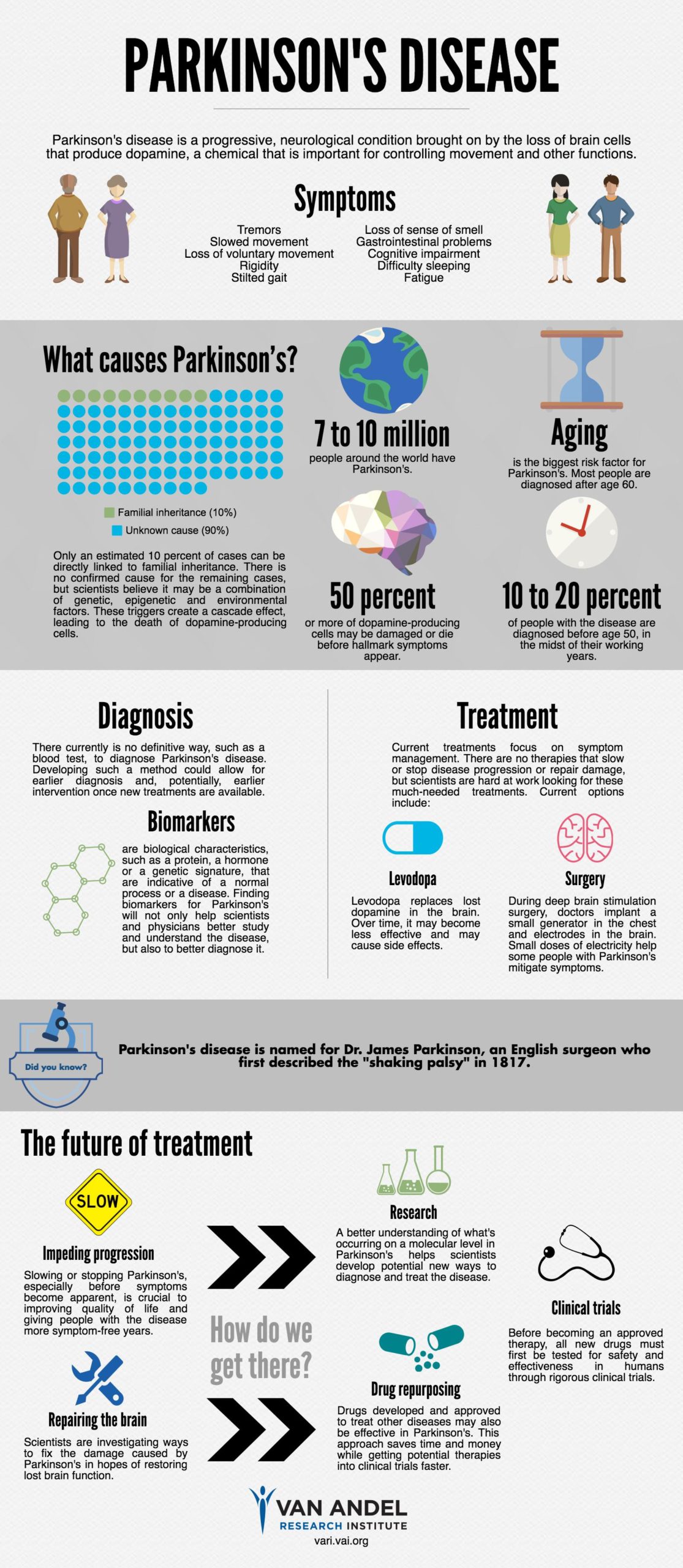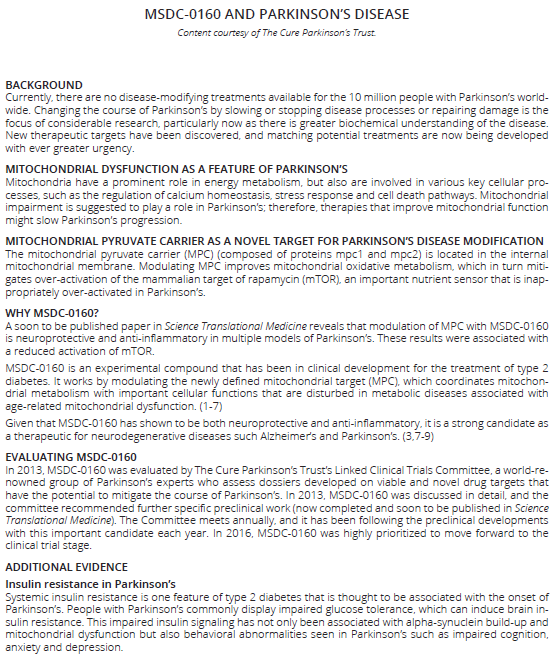New hope for Parkinson’s disease
December 7, 2016

By: Patrik Brundin, M.D., Ph.D.
Director of Van Andel Research Institute’s Center for Neurodegenerative Science, chairman of The Cure Parkinson’s Trust’s Linked Clinical Trials Committee
For the estimated between 7 million and 10 million people living with Parkinson’s disease, there’s new reason for hope: Van Andel Research Institute (VARI) is working with collaborators to develop human trials for a drug that could become the world’s first to slow disease progression.

Every indication shows the drug, MSDC-0160, will slow Parkinson’s disease in many people currently diagnosed—and in some cases may even help restore lost motor function. Delaying onset of symptoms would be a game-changer, giving people with Parkinson’s a higher quality of life for a longer period of time.
Improving life for people with Parkinson’s is deeply personal for me – my father was diagnosed when I was a young boy. As a scientist, I’ve studied Parkinson’s disease for 35 years. Over the course of my career, I’ve felt this level of excitement about the possibilities ahead only a few times. I genuinely hope all of our work results in happier, healthier lives for millions of people.
This work is a close collaboration with Metabolic Solutions Development Company (MSDC), a drug development company in Kalamazoo, Michigan, and The Cure Parkinson’s Trust, a U.K.-based research charity.
MSDC already has demonstrated that MSDC-0160 is safe for human use. (The company originally developed and tested the drug as a treatment for type 2 diabetes.) Based on our recent study in Science Translational Medicine, we’re ready to move into human trials to determine whether the drug is as effective in people with Parkinson’s as it has been in the lab. Trials are under development, and we expect them to start sometime in 2017.
Despite our excitement, it’s important to remember that the coming clinical trials will be MSDC-0160’s ultimate proving grounds. We know the drug is safe. We’ve shown that it treats Parkinson’s in laboratory models. Now it’s time to explore whether it works in people. Testing needs to be rigorous, and we are eager for the results.
For more information about today’s study please visit the Featured News page.
In the meantime, here’s some information about Parkinson’s and MSDC-0160:


